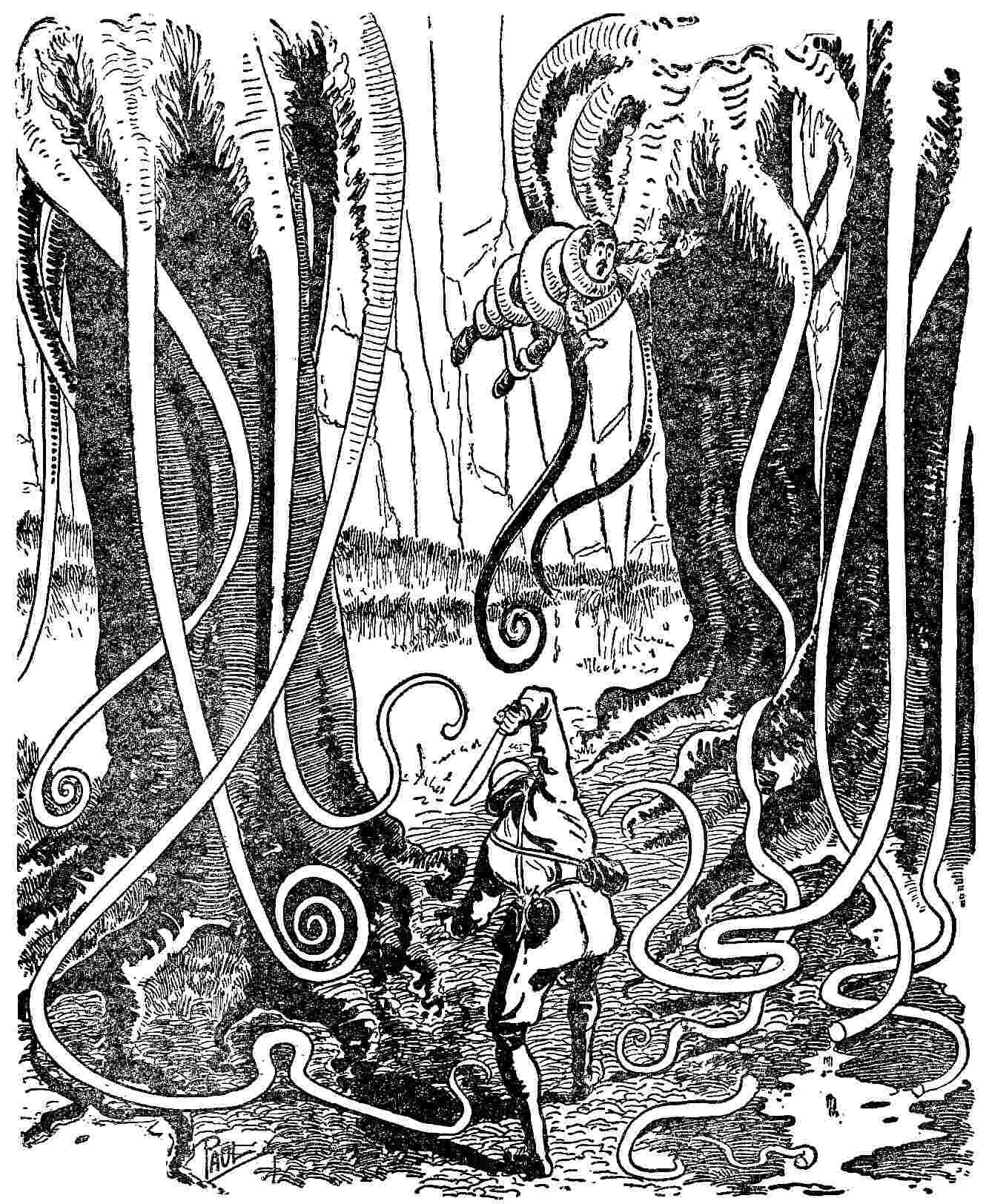Through the Crater’s Rim

But even as I gazed, transfixed with horror, paralyzed by the sight,the vine threw its last coil about the dying man and before my eyesdrew the quivering body into the tree above. Then something approachedmy leg. With a wild yell of terror I leaped aside. A second vine waswrithing and twisting over the ground towards me.
In this story the author of Beyond the Pole gives us another one of hisamazing contributions to Scientifiction. Here we find a strange raceliving within an extinct volcanic crater somewhere in Central America.
When it is remembered that only a few years ago an entirely new race wasdiscovered by scientists in Panama, which are now known better under thename of White Indians, it should be understood that Mr. Verrill is nottaxing your credulity by the strange race which he pictures in this story.
We promise you a good half hour’s reading in this well-told tale.
CHAPTER I
INTO THE UNKNOWN
“I tell you it’s there,” declared Lieutenant Hazen decisively. “It maynot be a civilized city, but it’s no Indian village or native town.It’s big—at least a thousand houses—and they’re built of stone orsomething like it and not of thatch.”
“You’ve been dreaming, Hazen,” laughed Fenton. “Or else you’re justtrying to jolly us.”
“Do you think I’d hand in an official report of a dream?” retorted theLieutenant testily. “And it’s gospel truth I’ve been telling you.”
“Never mind Fenton,” I put in. “He’s a born pessimist and skepticanyhow. How much did you actually see?”
We were seated on the veranda of the Hotel Washington in Colon and theaviator had been relating how, while making a reconnoissance flightover the unexplored and unknown jungles of Darien, he had sighted anisolated, flat topped mountain upon whose summit was a large city—of athousand houses or more—and without visible pass, road or streamleading to it.
“It was rotten air,” Hazen explained in reply to my question. “And Icouldn’t get lower than 5,000 feet. So I can’t say what the peoplewere like. But I could see ’em running about first time I went overand they were looking mightily excited. Then I flew back for a secondlook and not a soul was in sight—took to cover I expect. But I’llswear the buildings were stone or ’dobe and not palm or thatch.”
“Why didn’t you land and get acquainted?” enquired Fentonsarcastically.
“There was one spot that looked like a pretty fair landing,” repliedthe aviator. “But the air was bad and the risk too big. How did I knowthe people weren’t hostile? It was right in the Kuna Indian countryand even if they were peaceable they might have smashed the plane or Imightn’t have been able to take off. I was alone too.”
“You say you made an official report of your discovery,” I said. “Wha